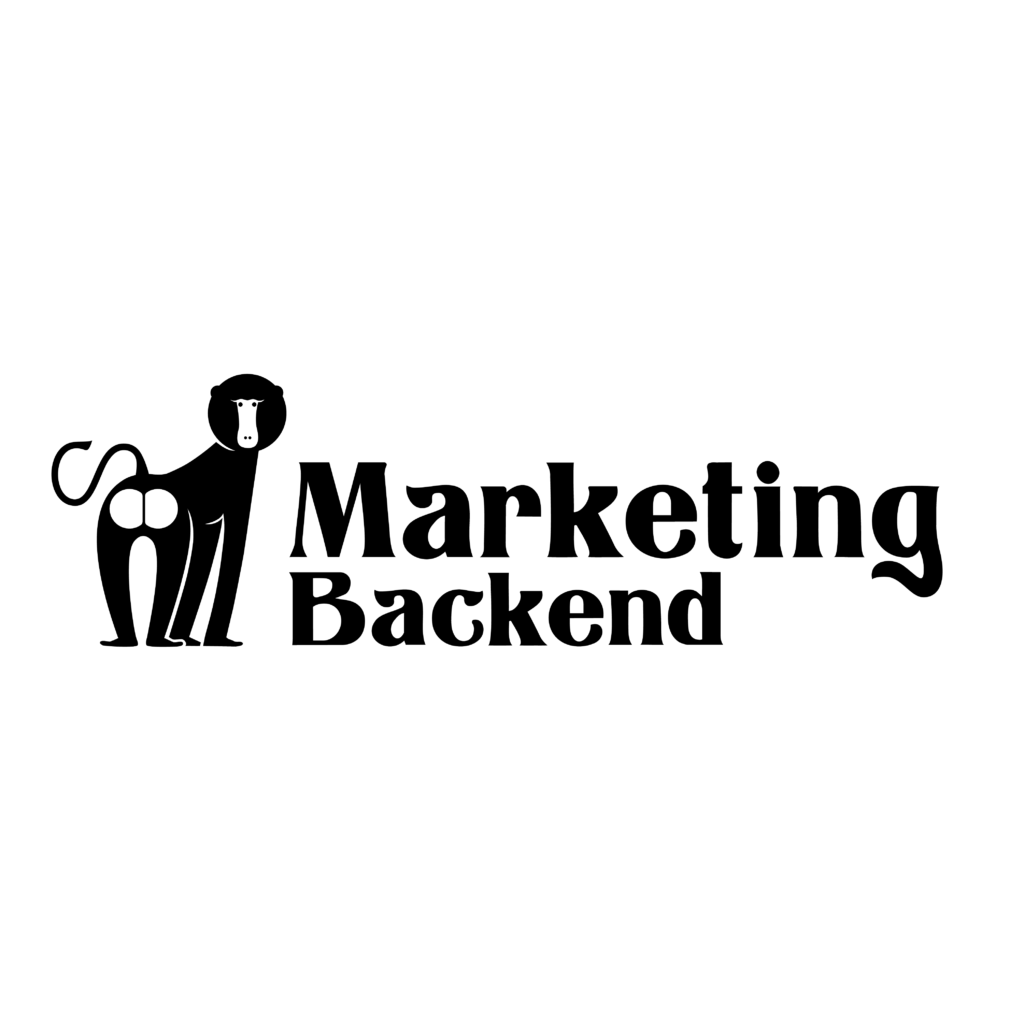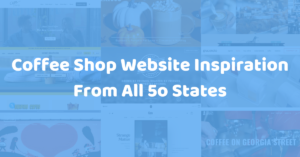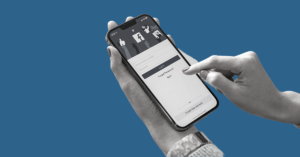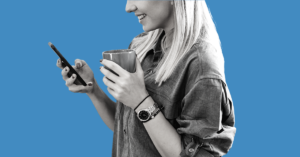Did you ever think that a poem could help your business grow? We’re not talking about the kind with rhymes and stanzas. We’re talking about the POEM framework for digital marketing.
POEM digital marketing framework
The POEM model is a digital marketing framework that helps marketers plan their efforts to achieve business goals. POEM stands for paid, owned, and earned media. This model helps identify the types of content used in a marketing campaign.

Businesses use the POEM framework to get more attention, generate more online traffic, and make more sales.
Let’s dive into these different types of media and learn how they work together to create a complete strategy.
Paid media
The “P” in POEM stands for Paid Media. As the name suggests, paid media involves distribution that you pay for. It includes sponsored advertising in various places across the internet. Any time when you exchange money to put your message in front of people, that’s paid media.
Examples of paid media
Paid media can come in many different forms. Some common examples of paid media include:
- Facebook ads
- Google search ads
- Display ads
- Sponsored influencer posts
Offline, paid media could include billboards, radio spots, and television advertisements.
Benefits of paid media
One of the main benefits of paid media is its ability to target specific users with a specific message. Platforms like Facebook and Google have billions of data points that they’ve collected that will help you reach a specific audience. These companies offer you the opportunity to advertise to the exact demographic or psychographic group that you’re interested in.
Influencer marketing also allows you to reach a specific audience. For example, if you want to target people interested in yoga, you’d work with a yoga influencer. This influencer would have an engaged audience of yoga that you want to reach.
Another benefit of paid media is that it can help jumpstart your marketing efforts. Owned and earned media take longer to reach the ideal audience and produce results. Paid media cuts down on that time by getting directly in front of the eyeballs you want.
Paid media offers another advantage for businesses when it comes to PPC advertising. With this approach, advertisers only pay when someone actually clicks on their ad. This helps businesses manage their costs and get a good ROI.
Drawbacks of paid media
One of the main drawbacks of paid media is just that. It’s paid. This means that you’ll always have to spend money to get your message out there. This can be an issue for businesses that are starting out. Not every business has the budget to invest in paid media.
Another potential drawback of paid media is ad blindness. Ad blindness occurs when someone simply ignores things that they know are advertisements. Think of how many times you’ve been on a website with banner ads and looked right past them to the content you actually want to see.
People don’t always like being sold things. Even if your product or service would be perfect for someone, they could ignore your message because they don’t trust ads.
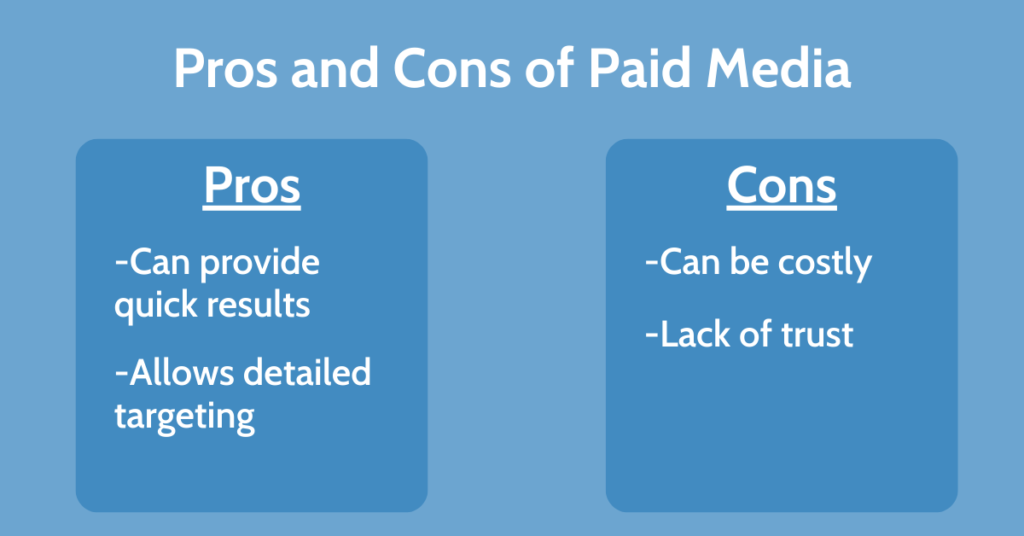
Owned media
The “O” in POEM stands for owned media. Owned media includes all the assets that your business owns and controls.
Examples of owned media
Owned media can be one of the best ways to promote your product or service. Some of the best examples of owned media are:
- Websites
- Email lists
- Mobile apps
- Blog posts
Benefits of owned media
The two greatest benefits of owned media assets are freedom and control. You can make them how you want and do with them what you please. This isn’t always the case with paid and earned media.
The possibilities are endless when it comes to owned media. You can have your website designed to your exact specifications. You can send whatever message you want to people on your email list. This isn’t always true when it comes to a business’s social media profile, for example.
Platforms like Facebook and Twitter have terms of service. You can only use the platforms on their terms. If you stray from those, they have the right to throttle your reach or even delete your account.
That may be an extreme example, but it’s important to consider who’s really in charge of the platforms that you’re using.
Another benefit of owned media is that it’s cost-effective. You don’t need to fork money over to advertising platforms to create it.
Drawbacks of owned media
One of the drawbacks of owned media is that it can be hard to get distribution for it. No matter how great your website is, if you can’t get the right eyeballs on it, it won’t make a difference for your business.
Another downside to owned media is that it can be difficult to create and manage. Designing an awesome website or developing a slick mobile app is a big undertaking. Not everyone has the time and talent to create and continually update owned media.
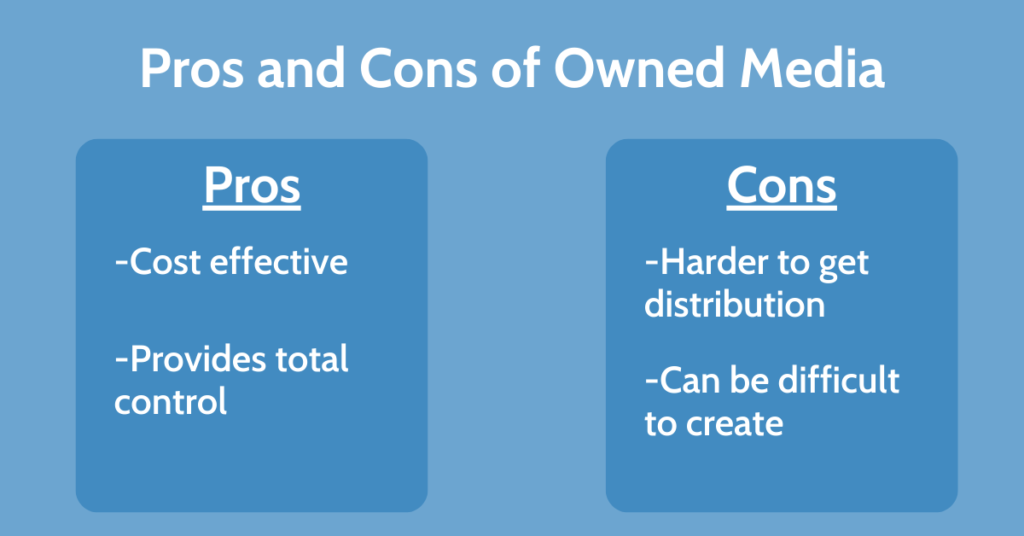
Earned media
The “E” in POEM stands for earned media. Earned media is exposure that a business receives as a result of organic attention. The best way to increase earned media is to create valuable content that people want to share.
Many marketers consider earned media to be inbound marketing. This is because the content attracts potential customers to your business without you doing outreach (outbound marketing).
Examples of earned media
- Word-of-mouth
- Publicity
- Viral marketing
- Search engine optimization
Benefits of earned media
A benefit of earned media is that it can attract potential customers to your brand without you having to go out searching for them. Earned media works like a magnet, attracting the right kind of people to your business. You know that these people are more likely to buy your product or service because something you’ve made has already resonated with them.
Earned media also helps increase your credibility. If lots of people are talking about and sharing your business, that buzz means something. Earned media can help you position yourself as an expert within your niche.
Drawbacks of earned media
One drawback of earned media is that you don’t necessarily have control over it. You can make awesome social media posts and do great work, but that doesn’t guarantee that people will talk about your business. You can do your best to create content that resonates, but it’s ultimately up to the people to decide whether or not to engage with or share it.
Another drawback when it comes to earned media is that it can be hard to replicate. If you are fortunate enough to “go viral,” it’s hard to strike gold twice. Because you don’t have a lot of control and don’t always know what will be a hit, earned media isn’t always scalable.

Combining paid, owned, and earned media
None of the parts of POEM operate in a vacuum. Sometimes the lines between them blur and they become difficult to distinguish. The best marketing results come when you combine these types of media.
Paid + owned media
One way that you could combine paid and owned media would be through PPC ads that lead to an email sign-up form on your website. You would use paid media to attract potential customers and then add them to your email list, which is part of your owned media.
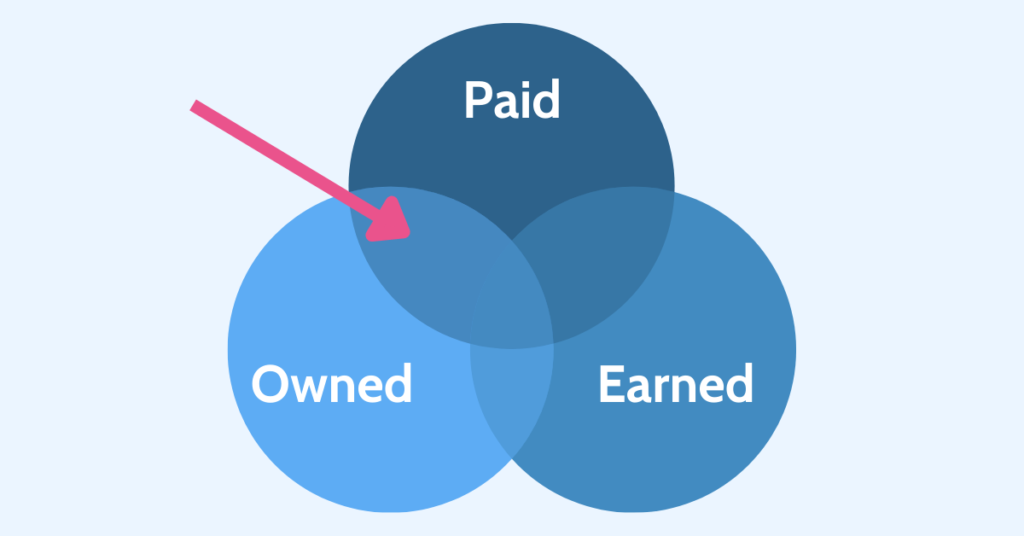
Paid + earned media
An example of combining paid and earned media is boosting an organic Facebook post that received a lot of engagement. The reach that the post earned thanks to people interacting with it would be supplemented by the paid distribution that it receives.
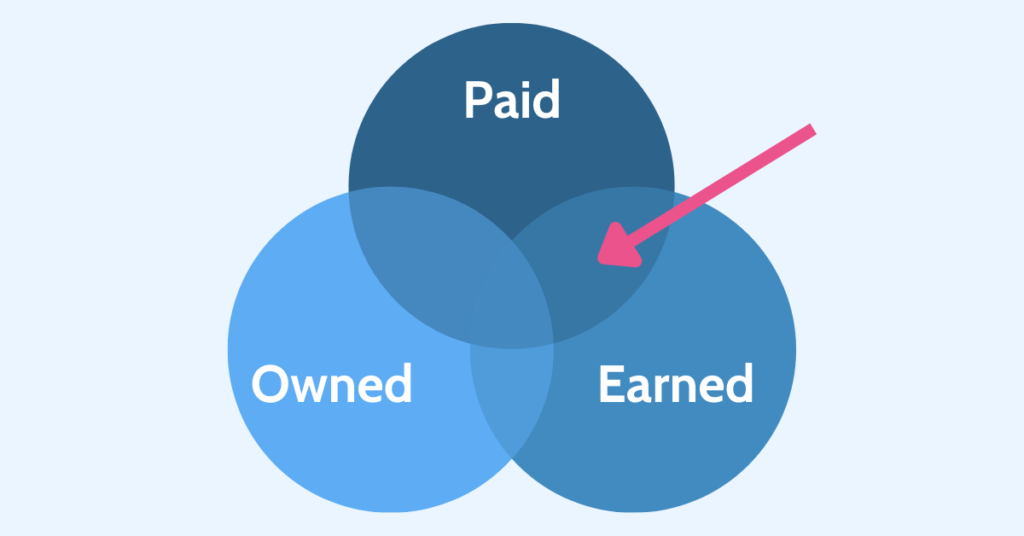
Owned + earned media
Owned and earned media work together when you create valuable content on your website. Helpful blog posts or infographics are pieces of owned media that can be shared to drive earned media traffic.
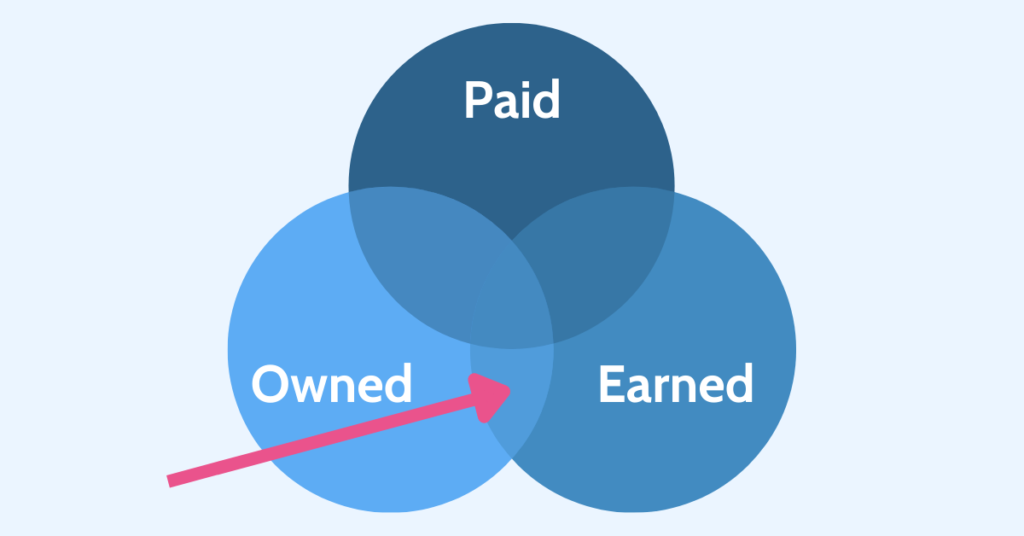
Paid, owned, + earned media
The best marketing happens when paid, owned, and earned media all support each other. Each part of the POEM framework is more effective when the other pieces are playing a role. A campaign in which each piece of the POEM model is complimenting the other pieces is the digital marketing trifecta.
Sometimes, the strategy starts with owned, then moves to earned, and finally ends with paid media. In this case, you would create a compelling piece of content (owned), which would drive social shares and traction (earned), and then sponsor posts or run ads using that asset because you already know it resonates (paid).
You could also start from a different direction. A marketer could use Google ads (paid) to get in front of the right audience and attract them to a blog post on your website (owned) that people would share with their friends because they found it valuable (earned).
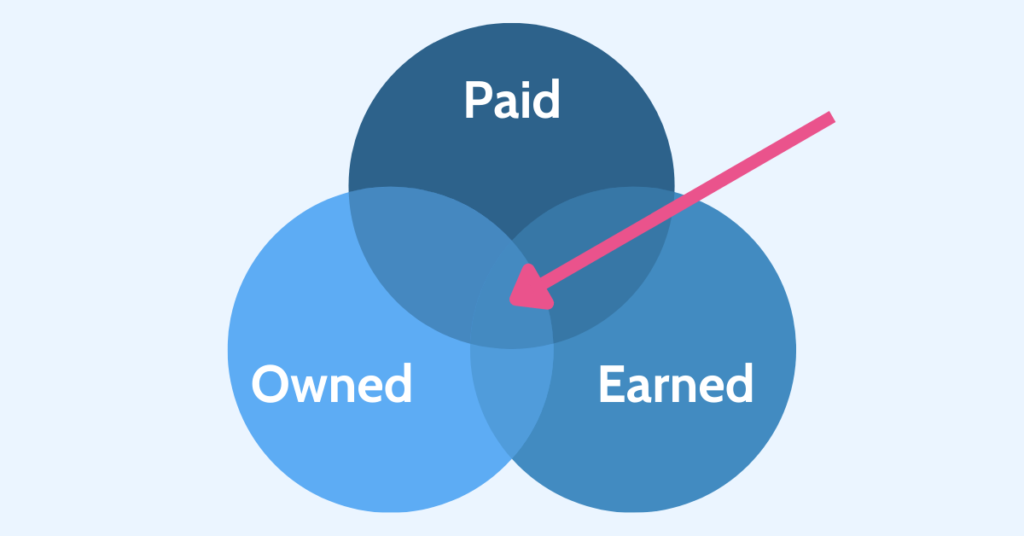
Take advantage of the POEM model in your digital marketing
The POEM framework helps us understand that digital marketing is a multifaceted process. A well-rounded marketing strategy involves paid, owned, and earned media. If you don’t take the opportunity to combine all three, you’re likely leaving money on the table.


